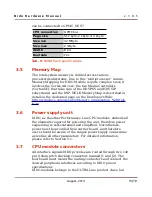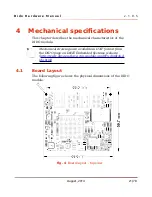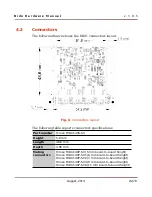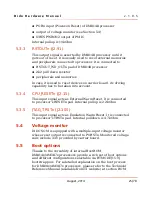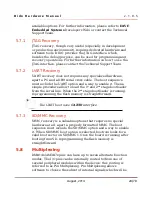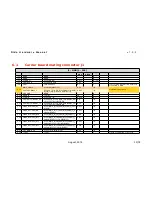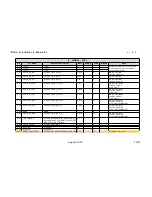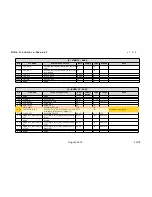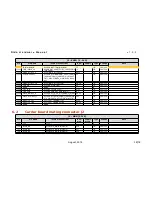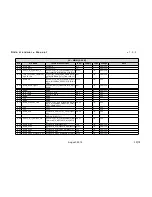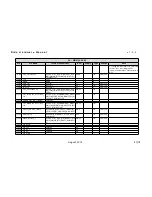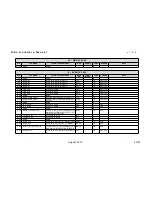
D i d o H a r d w a r e M a n u a l
v . 1 . 0 . 5
available options. For further information, please refer to
DAVE
Embedded Systems
Developers Wiki or contact the Technical
Support Team.
5.7.1
JTAG Recovery
JTAG recovery, though very useful (especially in development
or production environment), requires dedicated hardware and
software tools. DIDO provides the JTAG interface, which,
besides the debug purpose, can be used for programming and
recovery operations. For further information on how to use the
JTAG interface, please contact the Technical Support Team.
5.7.2
UART Recovery
UART recovery does not requires any specialized hardware,
apart a PC and a DB9 serial cross cable. The boot sequence
must include the UART option and a way to enable it. Then a
simple procedure allow to load the 1
st
and 2
nd
stage bootloader
from the serial line. When the 2
nd
stage bootloader is running,
reprogramming the flash memory is straightforward.
The UART boot uses
UART0
interface.
5.7.3
SD/MMC Recovery
MMC recovery is a valuable options that requires no special
hardware at all, apart a properly formatted MMC. The boot
sequence must include the SD/MMC option and a way to enable
it. When SD/MMC boot option is selected, bootrom looks for a
valid boot sector on SD/MMC1. Once the board is running after
booting from SD, reprogramming the flash memory is
straightforward.
5.8
Multiplexing
DM814x/AM387x pins can have up to seven alternate function
modes. The I/O pins can be internally routed to/from one of
several peripheral modules within the device: this routing is
referred to as Pin Multiplexing. Pin Multiplexing allows
software to choose the subset of internal signals which will be
August, 2014
28/78






